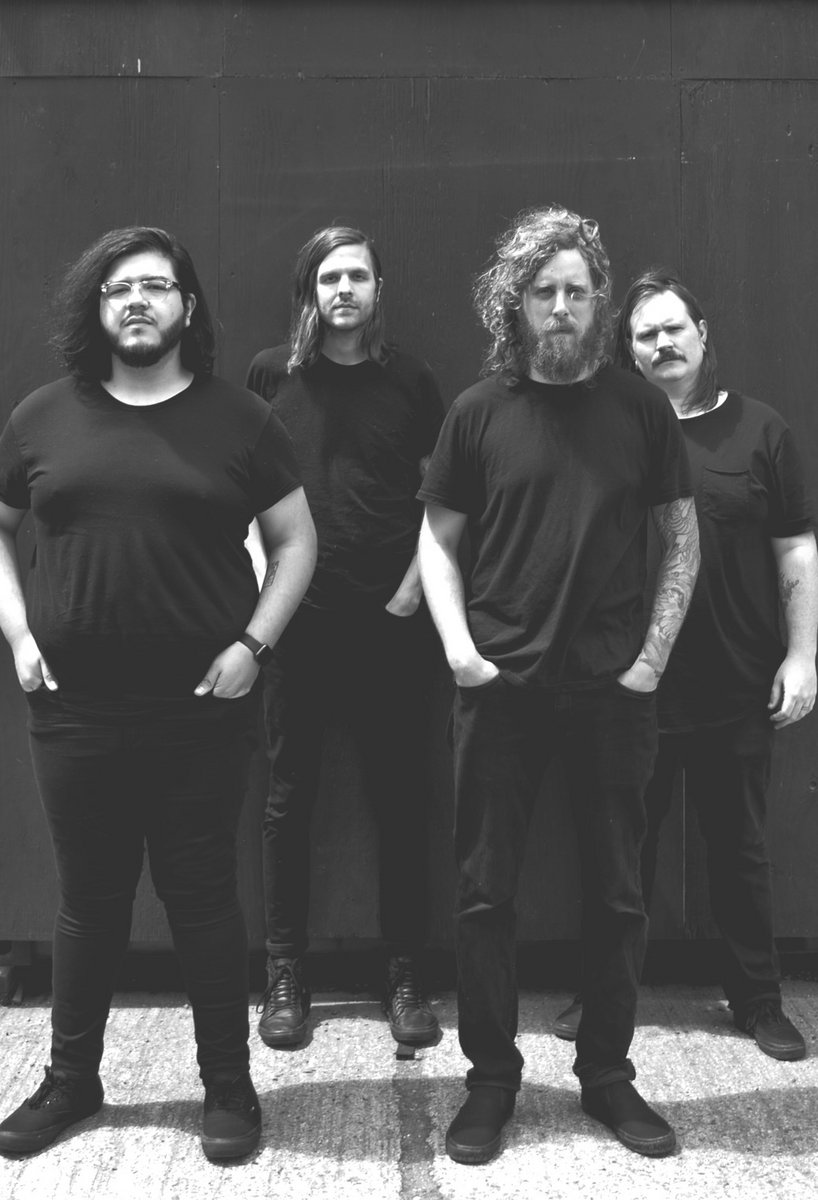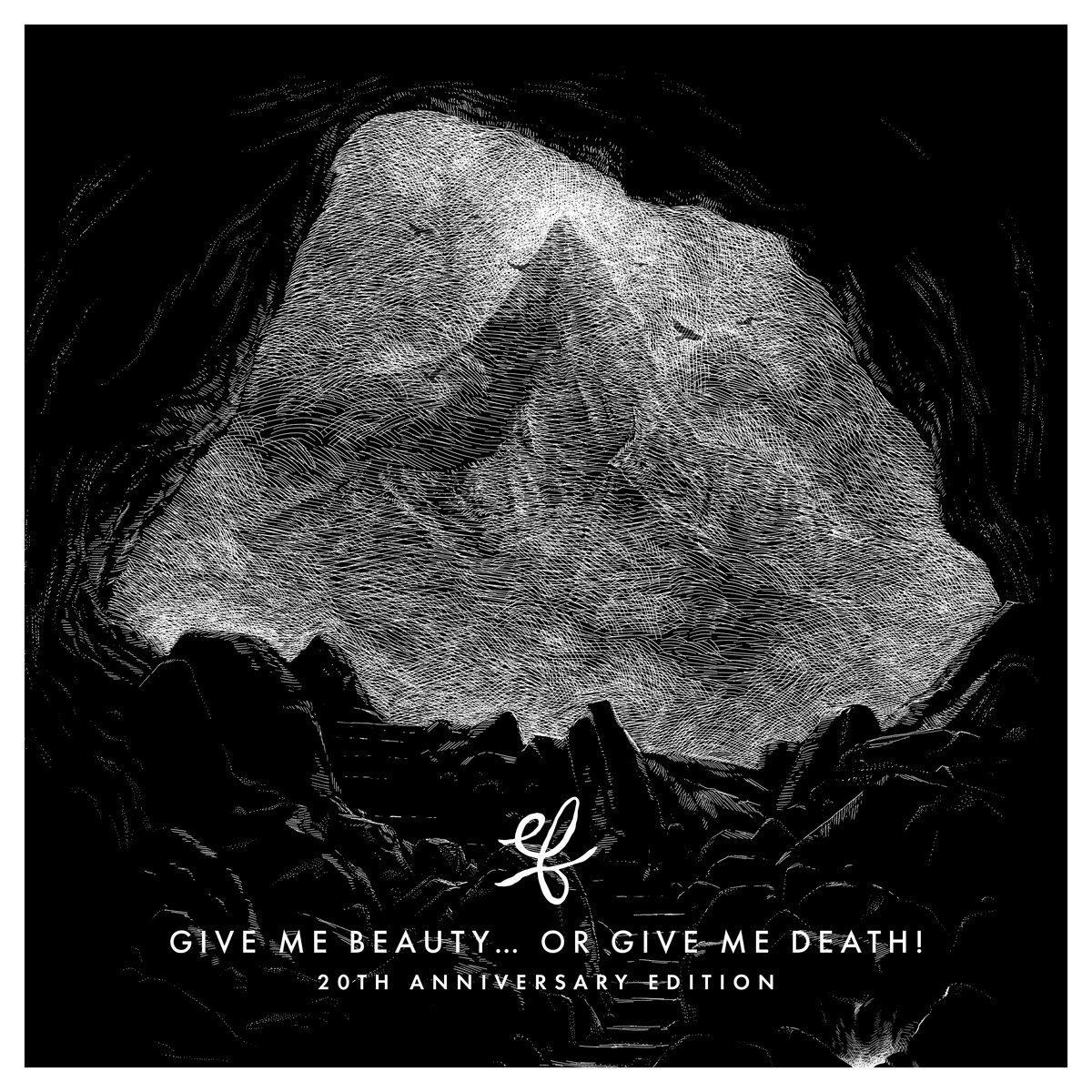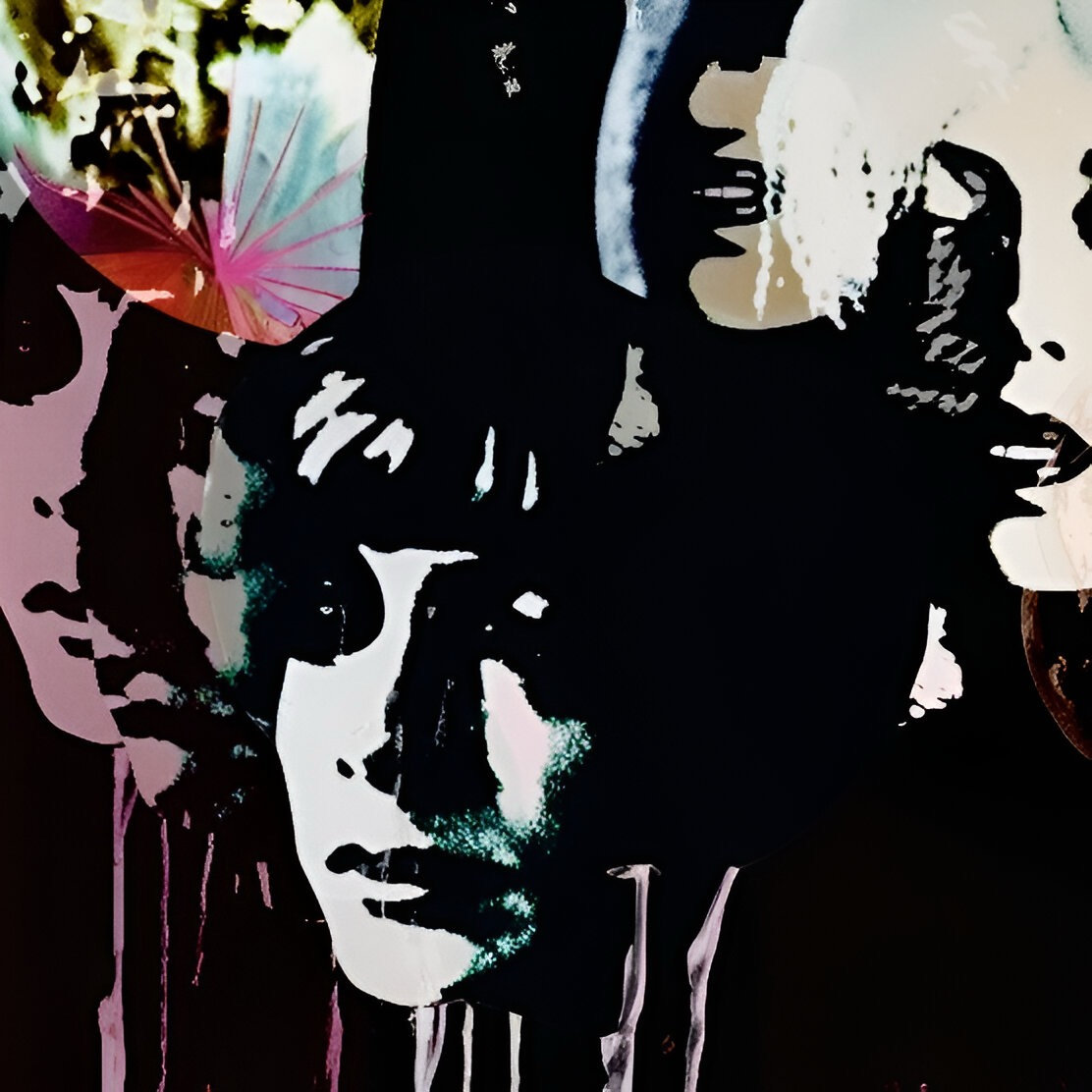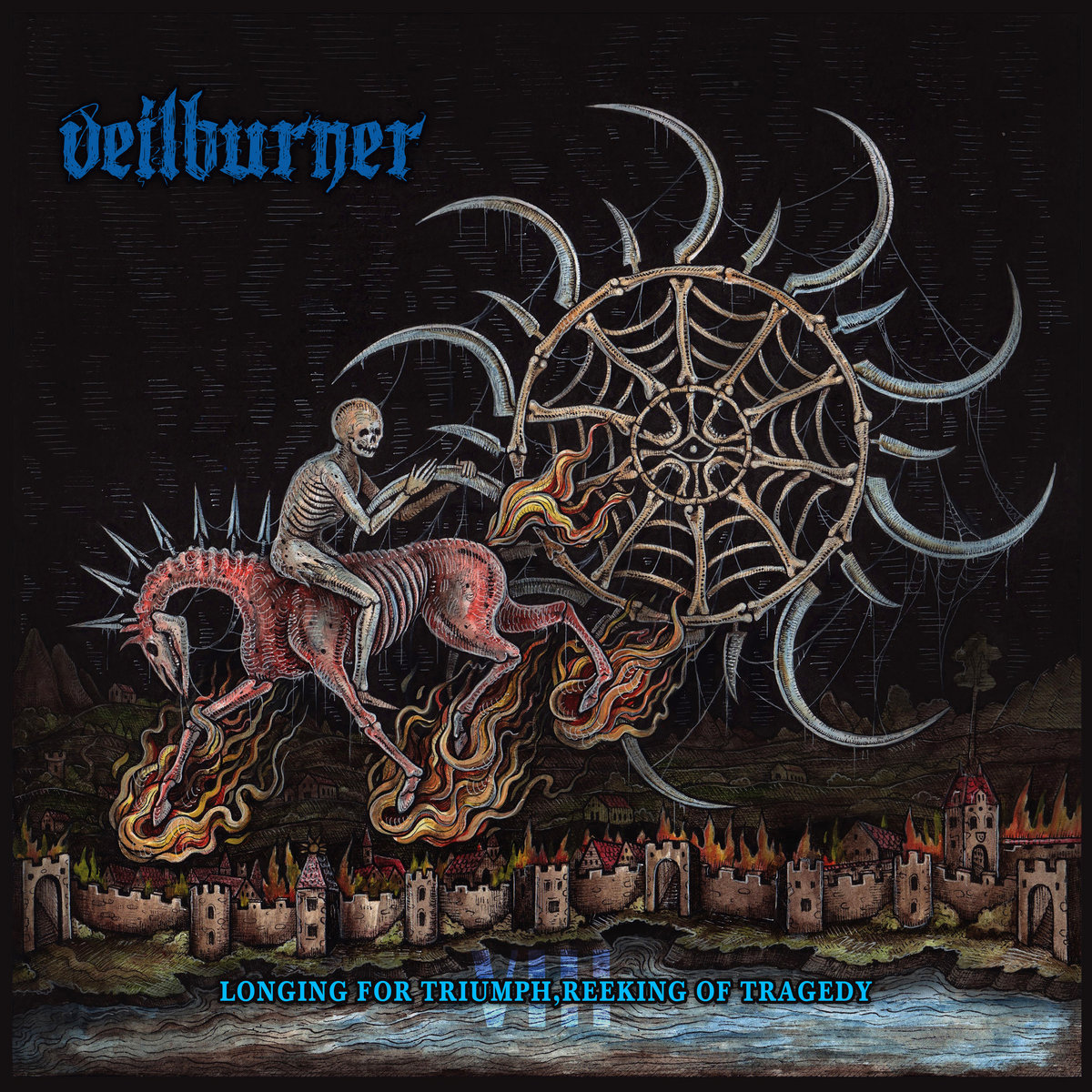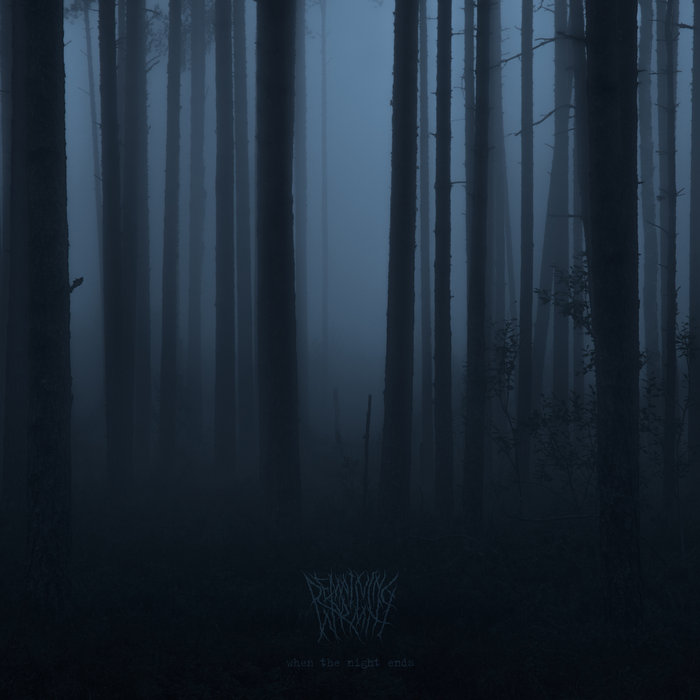We all have this label, right? Or let’s better say those labels! Or is it just me? You get their newsletter, quickly fly over it, thinking “Whoa, I bet this shit is awesome” and then you decide that you’ll better not check it out, because there’s already such a giant amount of great new stuff out there and you don’t want to end up placing yet another order right now. RareNoiseRecords, who are specialized in the fringes of Prog, extreme Jazz, Experimentalism and uhm… Noise, have received this ungrateful treatment from me more than once. Luckily I was so intrigued by the absurd perpetuum auto-mobile depicted on the cover of Jü’s III (how frustrating that there’s no legal possibilty to change your driving direction!) that I couldn’t live without examining if the quality of the music lived up to the artwork. And oh Jü, it does!
One could say that Jü are almost poster boys for what RareNoise is all about. The 2014 debut of the Hungarian trio was a full-on collaboration with Swedish saxophone monster Kjetil Møster, whose completely bonkers project with Mats Gustafsson, The End, introduced me to the record label in the first place. Jü meets Møster was a wild free jazz rock fusion ride, still more about sheer energy than the development of a signature sound.
Its successor Summa then sharpened the edges with the Rock and Jazz elements meeting in a brutal Hardcore furor closer to the phase when John Zorn discovered Napalm Death, thus giving birth to the legendary releases of both Naked City and PainKiller. At the same time also Jü’s weird experimental Noise side got more daring while being infused with influences from Eastern European Folk music.
On their recently released third studio work III all this is still present somehow, yet Jü have expended such a huge effort on broadening the scope of their sound into multiple directions that it almost feels like we’re meeting a completly new band here. It’s still the same three people though: András Halmos on drums and percussions, Ernö Hock on bass and Ádám Mészáros on guitar. New instruments, they brought into the fold, are the tambura, a Balkan relative of the mandolin, and the guembri, a bass lute instrument originating in Morocco. As indicated by that, the folk elements have been amplified, going so far as having half of the ten tracks being based on or at least citing from traditional songs. Yet, they are not only, as one may think, traditional songs from Hungary, Bulgaria or Northern Africa though, but travelling via Azerbaijan mostly all the way from as far as South East Asia!
How does a European band get the idea to explore Javanese music to such a degree? Maybe it just came through the acquaintance with singer Dóra Györfí, who comes from a background of working in Gamelan and Mayang (shadow puppet theatre) plays and who is guesting on half of the album - yet not even exactly on those very same songs. The second collaborator on III is Bálint Bolscó, who mainly contributes Ambient Electronic sounds.
Summing it up, just in case it gets hard to follow: Jü’s style on this record can be described as a proggy Jazz Rock power trio’s take on Indonesian traditionals with the additional integration of electronic Avantgarde as well as European and African instrumentation; which as a description almost sounds disgustingly academical and distracts from how damn awesome and fun this adventure actually is. So, the only proper way to give you an insight into the twists and turns of this rollercoaster is to take it track by track:
“Palaran” immediatly starts with Folk strings and a seemingly Arabic rhythm underlined by a persistent drone. Györfí’s voice wails over it in a high register. I’m immediately asking myself if this is not yet another new album by Mansur, one of the many projects of the immensly prolific Jason Köhnen. (See also Thorsten’s recent review of The Lovecraft Sextet!)
“Cerberus” screams “More cowbell!” and then becomes an epic instrumental 70’s psychedelic Prog journey with hints of the Mahavishnu Orchestra, but which you could also totally sell as a King Gizzard & The Lizard Wizard track, to which Stu Mackenzie’s vocals haven’t been added yet.
“Oak” is a quieter, more contemplative tune, the soundtrack you’ll need in case you find yourself carrying a bucket of dirty water from an almost dried-out well through a forlorn stone desert again. When will you ever learn from your hangovers?
“Ash” might be your ideal gateway to this record if you’re approaching it from a post rock perspective. Its foundation reminds me a lot of Radare conjuring spaghetti western connotations on Der Endless Dream, while the lead is escalating from Morriconism to Tarantinosity.
On “Thorn” Jü get heavy without the need to utilize metal for it. Hell, there’s not even much percussion in this two minute banger, mostly just hand clapping. Yet still this love child of phase Red King Crimson and the Indonesian experimental drone duo Senyawa (you might know them from working together with Sunn O)))’s Stephen O’Malley - and you should know them from their stunning Album of the Year-contender Alkisah), it absolutely kicks!
The even shorter “Bebek”, an interlude with a narration over a harmonically borderline guitar lick, primarily serves as a reminder that this isn’t an instrumental album and will feature more vocals through its second half.
And there goes the Crimson King rolling his lark tongue in aspic again, as “Cornucopia” throws us around in a restless extravaganza of weird Prog, which finally flows into a sound collage, which seems like a mixture of field recording samples from the Taiwanese duo Mong Tong and Japanese archaic beyond-Math Rockers Kukangendai (de)tuning their guitar, while Györfí gives her spookiest and shriekiest vocal performance (yet).
Bam! Someone fell on the bassist’s distortion pedal and now the band has to run in panic mode for two minutes again. Prog metal fans might like “Shashka”, Mr. Bungle afficionados should most definitely dig it!
And that’s just the warm-up for the nine minutes of insanity that is “Minerva”. The rhythmic madness of mentioned Kukangedai comes to full fruition. Funky snippets battle with The Mars Volta guitar-lines and Javanese mysticism. Like electric bees synths quickly fluttering around your head as your brain is lifted from its shell to embark on a final speed boat ride through a vortex which spits you out… … somewhere on the shores of a lonely island, whose sole eremtic inhabitant invites you to dry your clothes at his warm fireplace, while he tells you his story in “Sumirana Karo Sada Dina Ratee”. You can sleep now, friend, because you have lived and seen everything.
So that is III completely spoiled for you. And if only a quarter of the less or more obscure references in my ramblings stir just a tiny spark of your interest, Jü should give it a listen!


